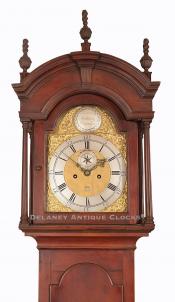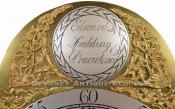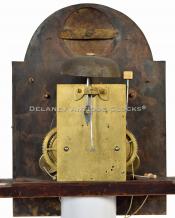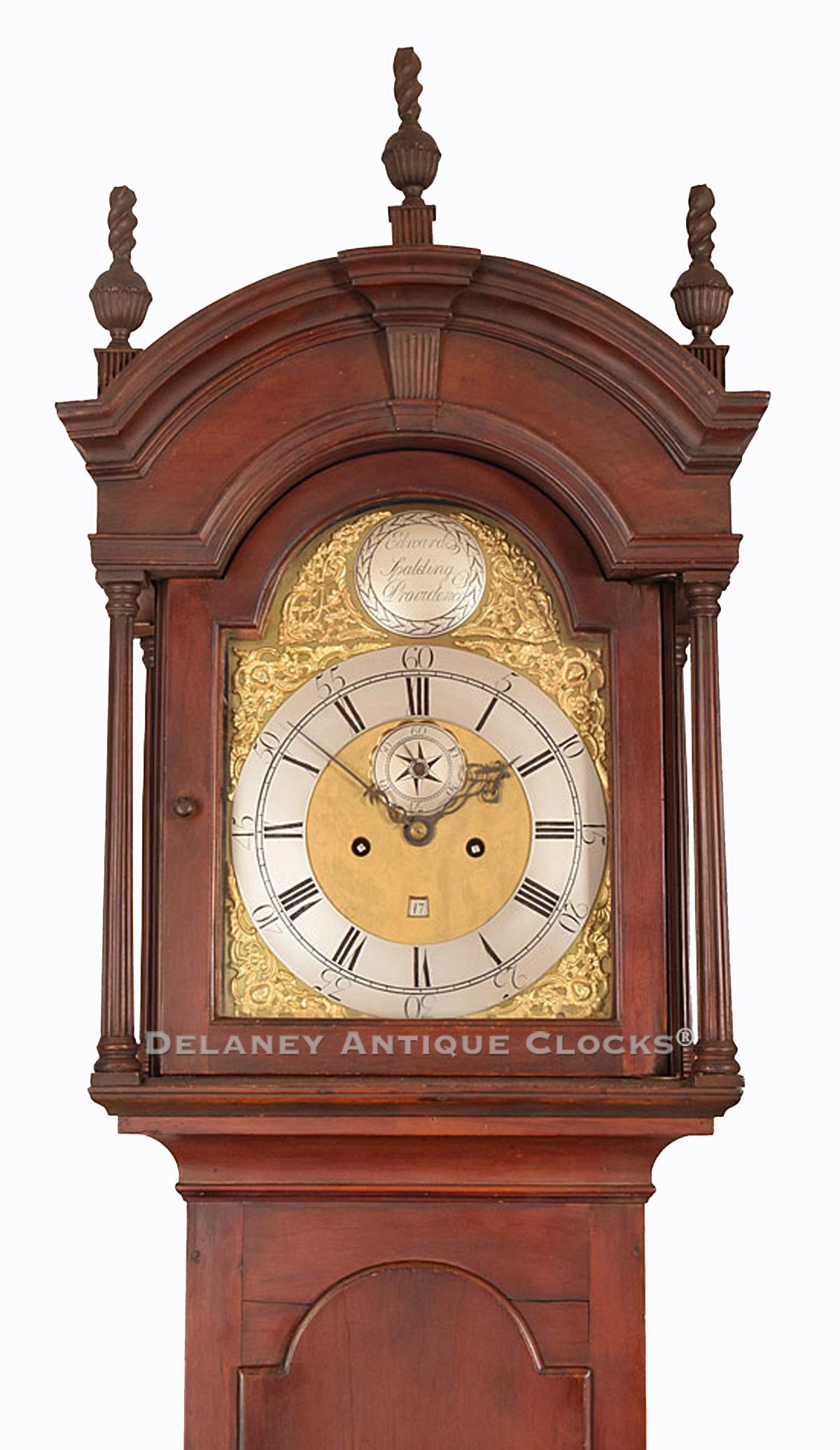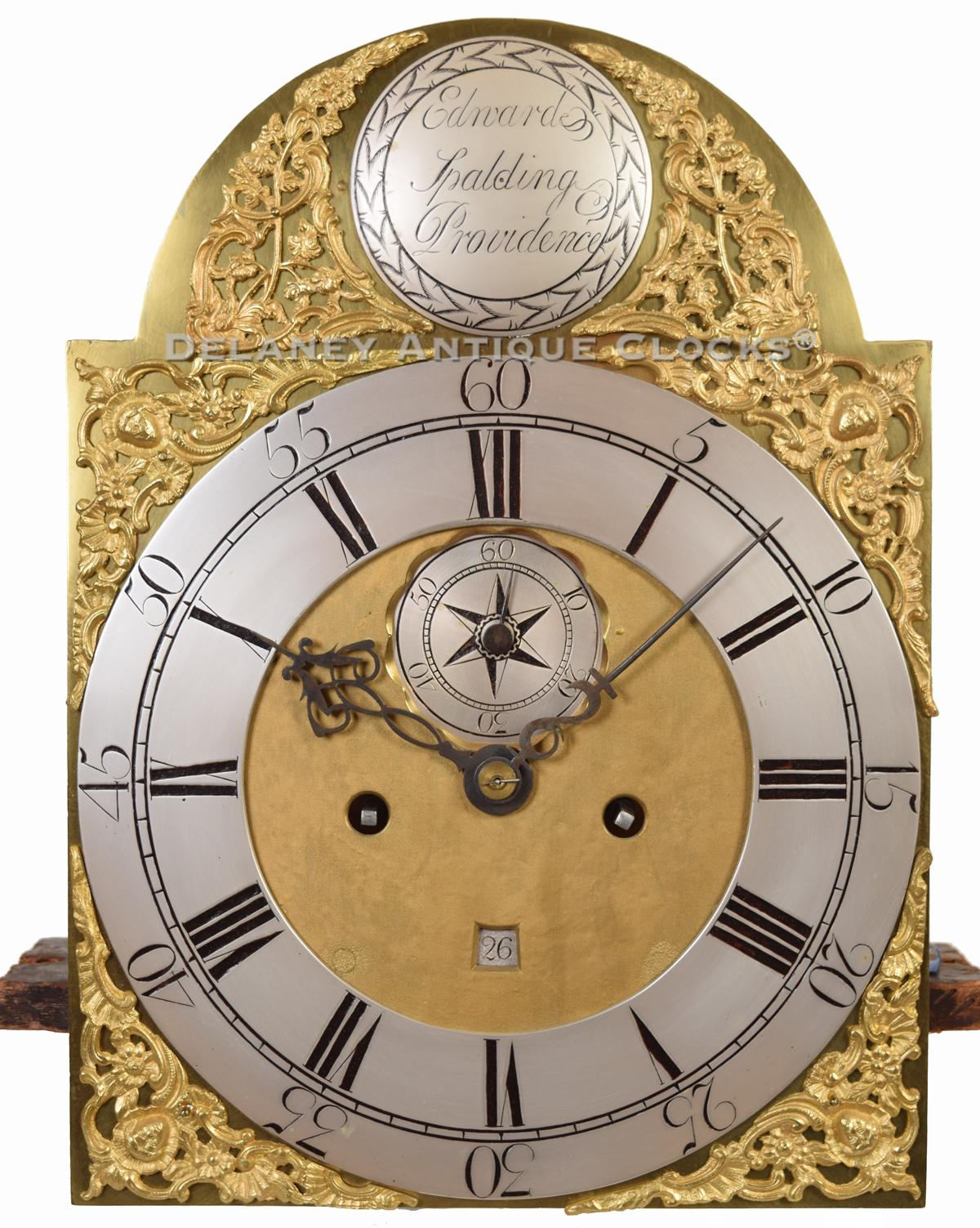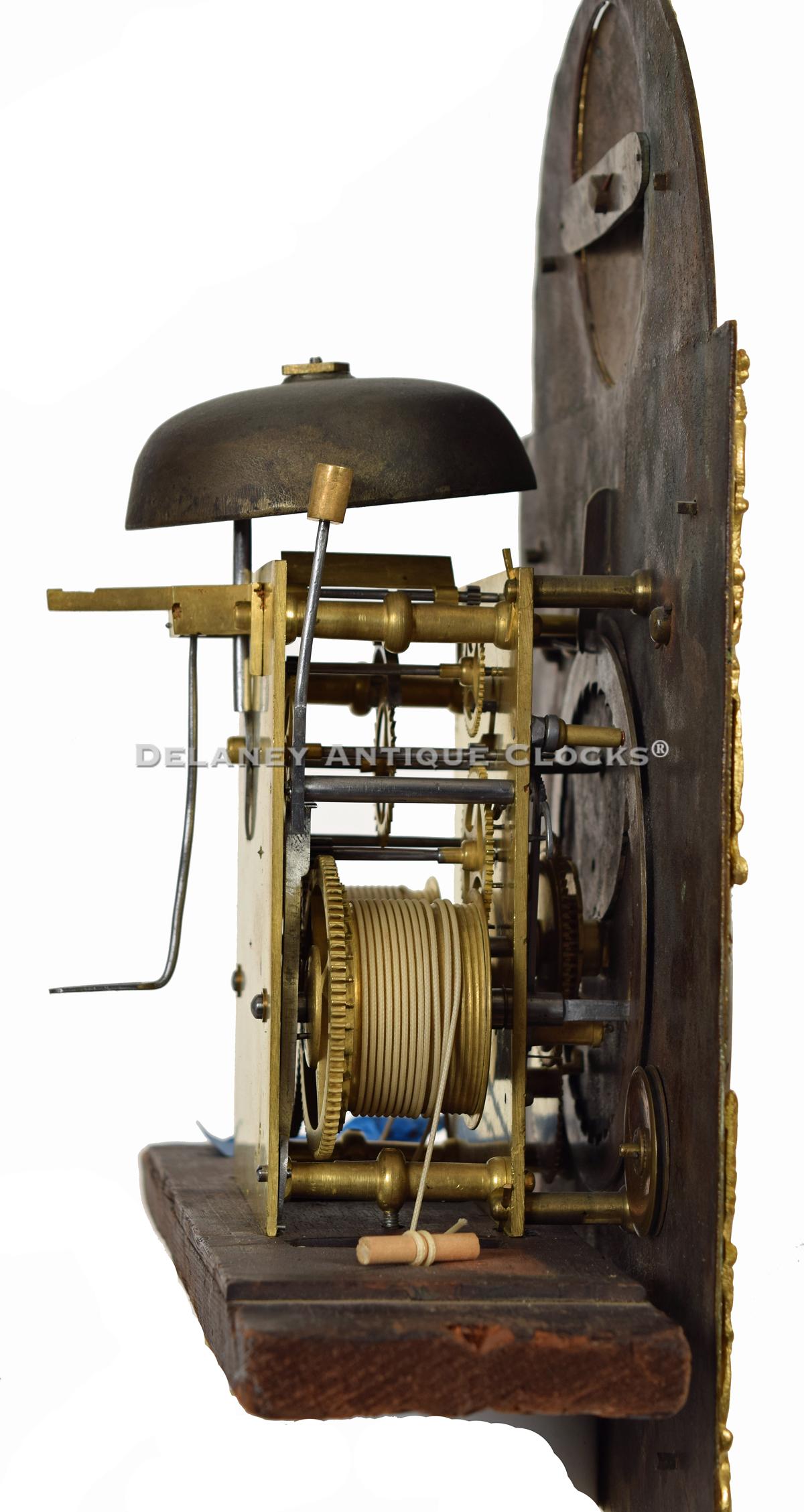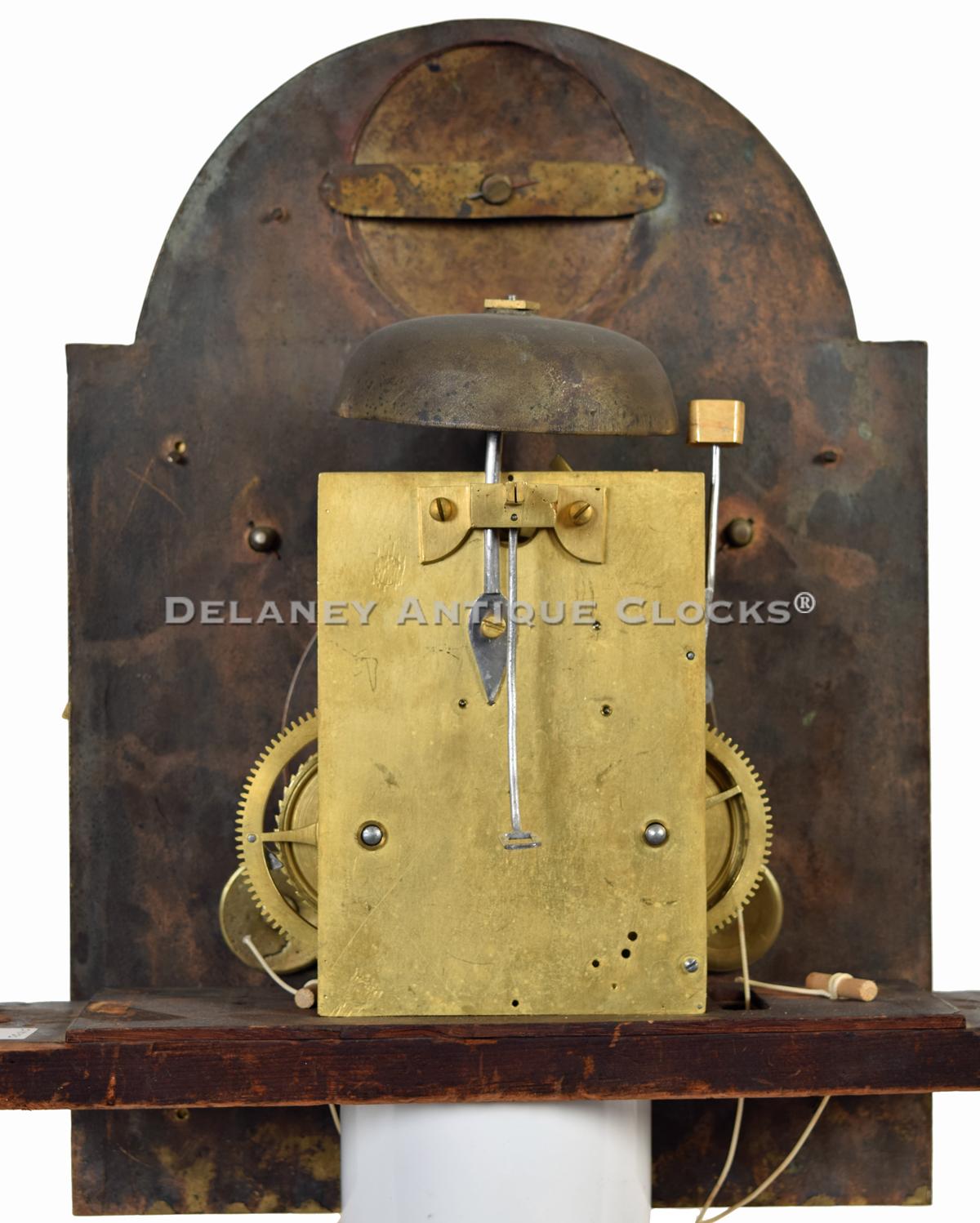Edward Spalding working in Providence, Rhode Island. A tall case clock. 222060.
This cherry-cased tall clock exhibits excellent narrow proportions and retains an old dry surface. The composite brass dial is signed in the lunette by the Providence, Rhode Island clockmaker Edward Spalding.
This case is elevated on four nicely shaped ogee bracket feet. They are a form that has become the standard of the region. Several other Rhode Island tall clocks feature feet with this design. They are applied to the bottom of an ogee-shaped molding that transitions into the base section. The transition from the base to the waist section is performed with a similar ogee-shape that constructed on a grander scale. The waist section is long and narrow and is fitted with a long tomb-stone-shaped waist door. This door is trimmed with a molded edge and opens to access the two drive weights and the brass-faced pendulum bob. The hood slides onto the cove-shaped waist molding. Four free-standing columns support the upper pediment. These are wonderfully detailed, slightly tapered, fluted, and terminate in shaped wooden capitals at both ends. The back two are cut in half, so they fit flat against the wall. The front two are positioned on either side of the arched-shaped bonnet door. Long narrow slits are cut into the side panels. These are backed in silk. A small arched molding above the door is separated from the larger cove molding above it by an unadorned frieze. The upper molding is boldly formed. The center of this molding projects out, and an architectural center fluted pilaster bisects the arch tympanum. Three carved wooden flame and ball-shaped finials are mounted on wooden plinths. The plinths are capped and feature a fluted design.
The movement or works is constructed in brass and is of good quality. Four turned pillars support the large brass rectangular-shaped plates. The works are weight driven and designed to run for eight days fully wound. It is a time and strike design having a rack and snail striking system. As a result, it will strike each hour on the hour. This is done on a cast iron bell mounted above the movement on a stand. In addition to timekeeping and hourly striking, the mechanism also measures the progress of the day of the month. This calendar is displayed below the center arbor. These works are complemented by a particularly elaborate brass dial.
The time is displayed on a composite brass dial. This dial form generally predates the more common painted dial form. The brass base sheet is decorated with applied cast brass spandrels, an applied chapter ring, an applied name boss, and inset seconds hand. Several of these elements are finished in a silver wash for contrast. The center is matted. The square window above the hour "VI" displays the current calendar day. A subsidiary seconds dial is located below the hour numeral "XII." This is decorated with a six-pointed star. One will also find the maker's name and working location, "Edward / Spalding / Providence," engraved in the applied name boss in the lunette. The steel hands are nicely made.
This clock stands approximately 8 feet or 96 inches tall to the top of the center finial. It is 21.25 inches wide and 12.25 inches deep.
Inventory number 222060.
Currently, very little is known about Edward Spalding's early life. His parents were Stephen and Marry (Lawrence) Spalding, who lived in Plainfield, Connecticut, when Edward was born there in 1732. It appears that he moved to Providence at an early age and may have trained as a clockmaker in this city. To whom he served his apprenticeship is not currently known. A clock that he is known to have made while working in Providence is dated 1753. This early date suggests that he made this clock shortly after he finished his indenture. It also confirms that he was one of Providence's earliest clockmakers. In 1757, Edward married Audrey Safford. Together they had three children, including Edward Jr., who was born in 1767. Edward trained under his father as a clockmaker. Edward (I) did a fair amount of advertising in the Providence Gazette during the period of 1766 – 1776. These adverisements prove that he was very involved in clockmaking before the Revolutionary War, where he served as Captain and rose to the rank of Major. After the war, he continued to make clocks. He died in Providence in 1785.
Prior to the American Revolution, very few Clockmakers were working in America. The most notable of which from Rhode Island are the Claggetts from Newport, and together they made what is considered a significant number of clocks for the period. Other Clockmakers like James Wady did not fare so well in business. Their output was much less significant, making Spalding the premier clockmaker of his working period in the region.
Several clocks are currently known. One that descended from the Calder family and is now in the collection of the Museum Fine Arts, Houston-Bayou Bend. A second clock originally belonged to Welcome Arnold (1745-1798), Providence, Rhode Island (see David B. Warren et. al., American Decorative Arts and Paintings in the Bayou Bend Collection, (Houston: Museum of Fine Arts.) Two others are pictured in Timeless. Masterpiece American Brass dial clocks.


